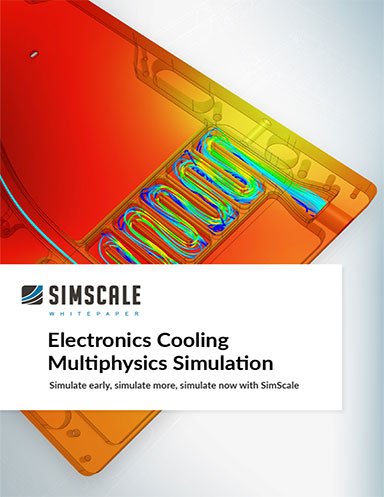
October 21, 2021
Simulate early, simulate more, simulate now with SimScale
Engineers who design and test electronics require high-fidelity engineering simulation to investigate heat and fluid flow in order to develop the best thermal management strategies.
Access to physics-based solvers in the cloud can enable teams to quickly assess performance and accelerate design iterations by leveraging the power of cloud computing.
This whitepaper highlights the benefits of cloud-native engineering simulation using SimScale and describes the fast and accurate analysis types available to engineering teams by simulating early in the design stage, throughout the R&D cycle, and across the entire organization.
Engineers and designers have traditionally been constrained by legacy desktop simulation software. Adopting digital prototyping techniques, to explore the full design space and reduce trial-and error type physical prototyping, has been stifled by limited local computational resources. On-premise computing power does not scale up or down ondemand, nor offer continuously evolving full-spectrum simulation and analysis capabilities. In this whitepaper, we discuss how the availability of cloud-native engineering simulation software mitigates these longstanding bottlenecks.
Understanding electronics cooling is important for a variety of reasons. A primary objective of good design is to keep every electronic component within operational design limits in order to maintain reliable and safe operation of the product. SimScale enables teams of designers and engineers to efficiently collaborate on projects and predict design performance in the early stages of product development.
A fully cloud-native simulation platform allows engineers to simulate and analyze high-fidelity models with complex physics by making High Performance Computing (HPC) accessible, giving unprecedented accuracy in results, efficiency in design collaboration, and versatility in the vast range of electronics cooling applications that can be solved.
Fill out the information below to download the resource.
Latest News





Related Topics




